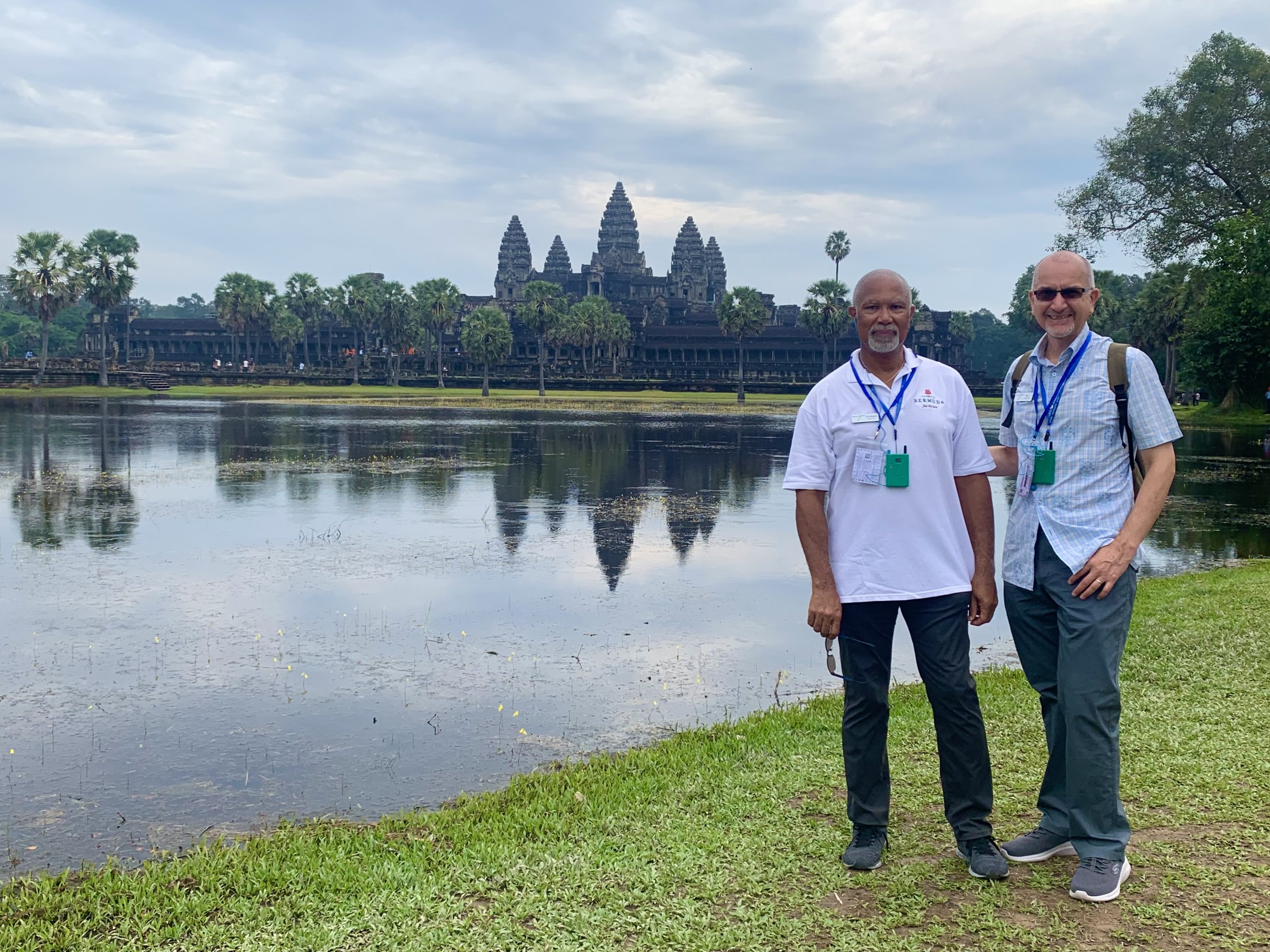Thomas MacDonald and Bill Henning at Angkor Wat, Siem Reap, Cambodia
How does one begin to describe Angkor Wat? To say this enormous 12th-century temple complex is historically impressive is not to say enough. It is the most recognizable landmark in Cambodia and the largest religious monument in the world with the longest continuous bas-relief sculpture in existence. In October 2022 when I gazed at the five towers from the distance, I wondered just how many people had been to this hallowed place. Not just the tourists that come in throngs these days but those that worshipped, celebrated, and communed there over the centuries.
Once we crossed the moat and entered the campus of temples and corridors it was even more impressive. There was a group of Buddhist monks visiting at the same time resplendent in their bright orange garb and sandals, the sight of which added dramatically to the scene. Our guide did a great job of condensing mountains of information and detail in his oration of the complex. The most anxious moment for me was when I ascended the very steep and tall metal steps that brought me to the third level of the central tower. From there the view was breathtaking.
My trip also included a 7-day cruise down the Mekong River aboard the beautifully appointed Mekong Jewel riverboat. Other noted stops in Cambodia were visits to the Bayon Temple at Angkor Thom; Tuol Sleng Genocide Museum and sadly the Choeung Ek Killing Fields. The visit was capped off with a stop in Phnom Penh. The capital which sits at the junction of the Mekong and Tonle Sap rivers was busy, to say the least. We visited the Royal Palace complex; the famous Silver Pagoda, home of Cambodia’s Emerald Buddha and Maitreya Buddha encrusted with more than 9,000 diamonds, and the National Museum. Today Phnom Penh has a population of 2.3 million and it was the hub for both the Khmer Empire and French colonialists. At the heart of the city is the massive art deco Central Market.

